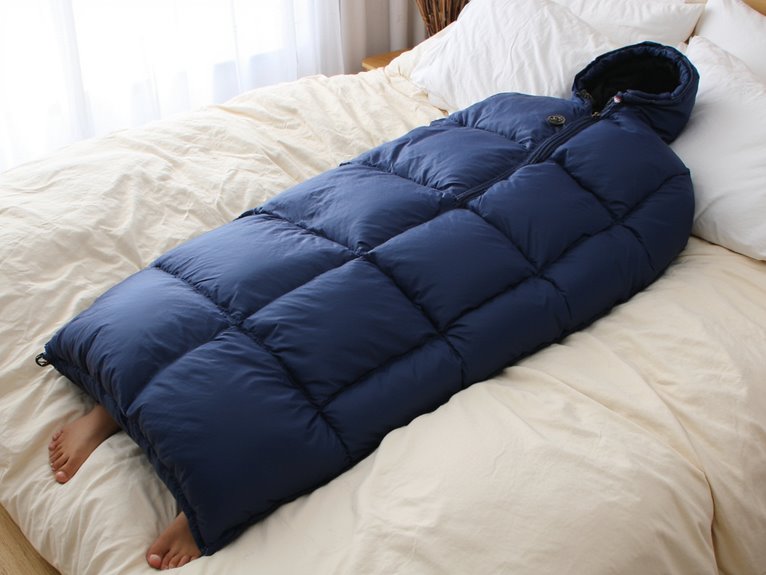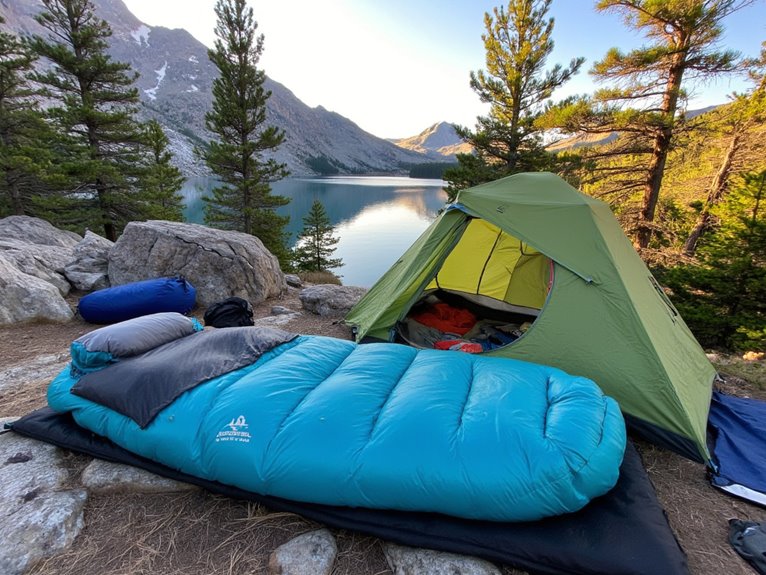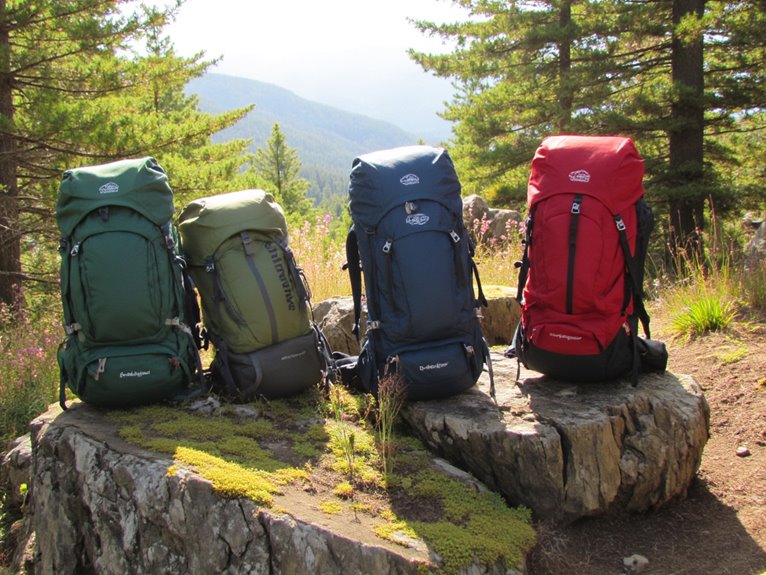Do I Need a Frame in My Backpack?
A backpack frame is essential for providing structural support and stability, enabling comfortable and efficient carrying of heavy loads. Frames come in internal, external, and hybrid designs, each with its strengths and weaknesses. Load capacity, weight distribution, and terrain considerations are key factors in determining the need for a frame. Additionally, body type, gear choices, and packing style influence the importance of a frame. By understanding these factors, you'll be better equipped to decide whether a frame is necessary for your backpack. Further exploration of frame types, materials, and design considerations will reveal the ideal solution for your specific needs.
We are supported by our audience. When you purchase through links on our site, we may earn an affiliate commission, at no extra cost for you. Learn more. Last update on 25th December 2025 / Images from Amazon Product Advertising API.
Understanding Frame Types and Materials
Backpack frames can be broadly categorized into three main types: internal, external, and hybrid frames, each constructed from a variety of materials that impact their durability, weight, and functionality.
Internal frames are built into the backpack, providing a sleek silhouette, while external frames offer greater ventilation and ease of repair.
Hybrid frames combine the benefits of both, offering a balance between weight, durability, and ventilation.
Materials such as aluminum, titanium, and fiberglass are commonly used, each with its own strengths and weaknesses.
Understanding the differences between frame types and materials is essential in selecting the right backpack for your needs, ensuring a comfortable and reliable carrying experience.
Load Capacity and Weight Distribution
When selecting a backpack, it is crucial to consider the load capacity and weight distribution, as they have a direct impact on the comfort, balance, and overall performance of the pack.
A pack that is overloaded or poorly balanced can lead to discomfort, fatigue, and even injury.
To ensure optimal load capacity and weight distribution, consider the following key factors:
Pack volume: Ensure the pack has sufficient volume to accommodate your gear without compromising comfort and balance.
Weight distribution: Look for packs with features that promote even weight distribution, such as hip belt pockets and compression straps.
Load limit: Be mindful of the pack's recommended load limit to avoid overloading and compromising the pack's structure.
Terrain and Trail Conditions Matter
When venturing into the great outdoors, it's essential to ponder the terrain and trail conditions that lie ahead.
The type of terrain and trail conditions can profoundly impact the performance and durability of your backpack frame, making it imperative to choose a frame that can adapt to varying environments.
From trekking rocky trails to traversing smooth paths, understanding the demands of different terrain and trail conditions is essential for a successful and enjoyable backpacking experience.
Rocky Terrain Ahead
One of the most critical factors to weigh when preparing for a backpacking trip is the terrain and trail conditions, as they can greatly impact the difficulty and safety of your journey. Rocky terrain, in particular, can be challenging, especially with a heavy backpack.
When traversing rocky terrain, consider the following key factors:
Steepness: Rocky terrain often involves steep inclines, which can be hazardous, especially with a heavy pack.
Stability: Unstable rocks and loose gravel can cause slips and falls, making it essential to maintain your center of gravity.
Obstacles: Rocky terrain often involves circumventing or climbing over obstacles like boulders, logs, and streams, which can be exhausting and time-consuming.
Mountainous Trails Await
Mountainous trails, with their unpredictable weather patterns and dramatic elevation changes, pose a unique set of challenges that demand careful planning and preparation.
Navigation can be tricky, with steep drop-offs, rocky outcroppings, and dense vegetation making it difficult to stay on track.
Add to this the potential for inclement weather, and it's clear that a sturdy backpack frame can be a lifesaver.
By providing additional support and stability, a frame can help distribute the weight of your pack more evenly, reducing fatigue and improving balance on uneven terrain.
This can be especially vital when traversing narrow ledges or steep inclines, where a moment's loss of balance can have serious consequences.
Smooth Paths Unfold
Across varied landscapes, the simplicity of smooth trails belies the importance of understanding terrain and trail conditions, which can notably impact the effectiveness of a backpack frame. While smooth paths may seem innocuous, they can still pose unique challenges to your backpack and body.
Consider the following factors when evaluating terrain and trail conditions:
- Gradient and incline: Steeper trails can put additional strain on your backpack and joints.
- Surface type: Hard, rough, or slippery surfaces can affect your backpack's stability and your own footing.
- Obstacles and features: Streams, rocks, and other natural obstacles can impact your route and backpack's performance.
Understanding these factors will help you choose the right backpack frame for your needs and ensure a more comfortable, safe, and enjoyable journey.
Body Type and Comfort Considerations
When selecting a backpack frame, it is crucial to think about individual body type and comfort factors to guarantee a proper fit.
A frame that accommodates torso length and width, provides comfortable shoulder straps and pads, and features an effective lumbar support system can greatly improve overall hiking experience.
Torso Length and Width
Proper torso length and width in a backpack frame are essential considerations, as they directly impact the comfort and fit of the pack on the wearer's body.
A frame that is too short or too narrow can cause discomfort, fatigue, and even injury. Conversely, a well-fitting frame can distribute the weight of the pack evenly, reducing strain on the back and shoulders.
When selecting a backpack frame, consider the following:
- Measure your torso length: Ensure the frame is compatible with your torso length to prevent the pack from shifting or digging into your back.
- Consider your body type: If you have a larger or athletic build, look for frames with adjustable torso lengths and widths to accommodate your needs.
- Try before you buy: If possible, test the pack with a loaded frame to ensure a comfortable fit.
Shoulder Straps and Pads
With a well-fitting frame in place, attention can now turn to the shoulder straps and pads, whose comfort and adjustability play a significant role in distributing the pack's weight and alleviating fatigue.
The shoulder straps should be wide and padded to reduce pressure points, with adjustable lengths to accommodate different torso lengths.
Padded shoulder pads can also provide additional comfort and ventilation.
For larger or heavier backpackers, wider and thicker shoulder straps may be necessary to distribute the weight more evenly.
It's essential to take into account body type and comfort when selecting a backpack, as ill-fitting shoulder straps can lead to discomfort and fatigue during extended wear.
Lumbar Support System
A lumbar support system that is tailored to an individual's body type and comfort preferences can substantially improve the overall comfort and stability of the backpack, particularly for users who require additional lower back support.
When selecting a lumbar support system, consider the following key factors:
Body type: Verify that the system is designed for your body shape and size, taking into account factors such as torso length and hip width.
Comfort preferences: Choose a system that provides the desired level of cushioning, ventilation, and adjustability to meet your comfort needs.
Activity type: Select a system that is designed for your specific activity, such as hiking, camping, or daily commuting.
Gear and Packing Style Influence
Influenced by personal comfort levels and hiking styles, backpackers' gear choices and packing techniques substantially impact the overall frame weight and distribution in their backpack.
For instance, ultralight enthusiasts who prioritize minimalism often opt for smaller, lighter frames, while thru-hikers may prefer more supportive frames to accommodate heavier loads.
Packing style also plays a significant role, as careless loading can lead to uneven weight distribution, putting additional strain on the frame.
Conversely, a well-packed backpack can reduce the load on the frame, making it more comfortable and efficient.
Alternatives to Traditional Frames
Beyond traditional frames, backpackers are embracing alternative designs that prioritize comfort, flexibility, and weight distribution. These innovative solutions cater to different hiking styles and preferences, offering a more personalized fit and feel.
Some popular alternatives to traditional frames include:
Frameless packs: These lightweight packs rely on clever packing and compression to maintain their shape, reducing weight and bulk.
Internal stays: These flexible rods or wires provide additional support and structure without the bulk of a traditional frame.
Hybrid designs: Combining elements of framed and frameless packs, these hybrids offer a balance of comfort, flexibility, and load-carrying capacity.



